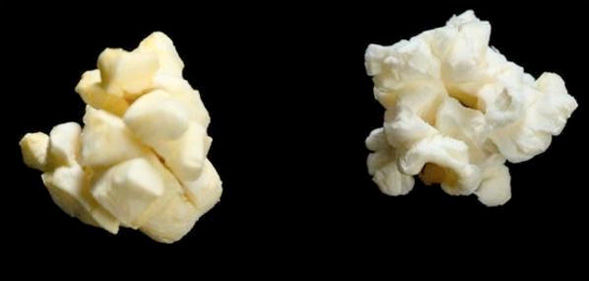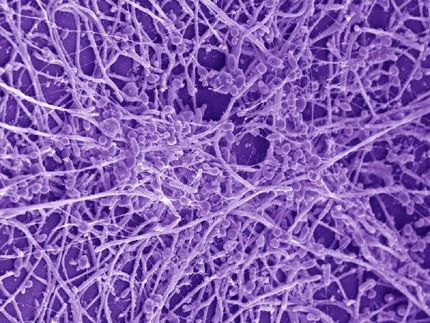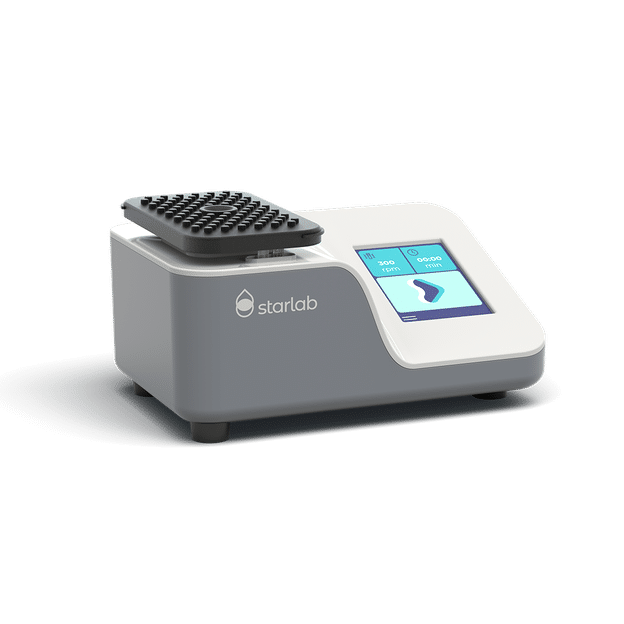Is a "buttery" molecule behind cystic fibrosis flare-ups?
A molecule previously linked to lung injuries in factory workers producing microwave popcorn might play an important role in microbial infections of the lung suffered by people with cystic fibrosis (CF), according to a recent study led by San Diego State University postdoctoral researcher Katrine Whiteson. The molecule, known as 2,3-butanedione or diacetyl, can be detected in higher concentrations in CF patients than in healthy ones.

The molecule diacetyl is what makes microwave popcorn taste buttery.
Courtesy of the Popcorn Board
CF patients experience day-to-day persistent coughing and increased mucus production, punctuated by periodic flare-ups of these symptoms, known as exacerbations. Most of the permanent scarring and damage to lung tissue in CF patients, health experts believe, occurs during these exacerbations.
If CF patients had some warning of oncoming or imminent exacerbations, they could respond with earlier or more specific treatment, and ward off some of the damaging effects.
“Unfortunately, right now there’s really no good way to detect when someone’s about to have an exacerbation,” Whiteson said.
When CF patients visit the doctor, they inhale vaporized salt to induce deep coughing, producing a mucus sample. When clinical labs culture the microbes in these samples, they usually don’t find big differences between the microbes that grow when CF patients are feeling healthy and when they are feeling sick, leaving doctors to choose antibiotic therapies based on trial and error. So the question that has plagued researchers is: What’s different about the CF lung during these exacerbations?
Mystery molecule
In an effort to find out, Whiteson, working with fellow SDSU researchers Yan Wei Lim, Robert Schmieder, Robert Quinn and Forest Rohwer, as well as colleagues Simone Meinardi and Donald Blake at the University of California, Irvine, investigated the molecules produced by microbes in the airway.
Working with the same lab that won the Nobel Prize for the discovery of ozone-destroying CFCs in the atmosphere, the researchers measured the breath gases produced by both CF patients and healthy volunteers. Analyzing those gases, they found elevated levels of diacetyl in the CF patients’ lungs.
This molecule, which has a buttery flavor and is the main ingredient in microwave popcorn flavoring, is toxic and has been implicated in damaging the lungs of popcorn factory workers.
Whiteson and her colleagues theorize that various species of the oral microbe Streptococcus produce the diacetyl via a fermentation process. The molecule can also activate harmful effects of other bacteria that are common in the lungs of CF patients. For example, when the bacteria P. aeruginosa come into contact with diacetyl, it causes the bacteria to produce toxic compounds which may be partially responsible for CF’s characteristic lung damage. The researchers published their findings last month in The ISME Journal: Multidisciplinary Journal of Microbial Ecology. An accompanying article authored by Cornell University microbiologist describing the effects of diacetyl on P. aeruginosa was published in the same journal.
Whiteson’s research team took samples from a relatively small number of patients and volunteers, so the next step will be validating their results with a larger pool.
Better detection
Whiteson and her colleagues envision a new technology based on their recent work that acts a bit like a breathalyzer and detects the presence of diacetyl. By regularly monitoring the presence of the molecule in their breath, CF patients might get an early detection signal indicating that an exacerbation is imminent, and then take antibiotics to prevent it from occurring.
“If you had a device to detect these metabolites, you’d know, ‘Oh, it’s time to take antibiotics again,’” she said.
Whiteson is currently working with a Silicon Valley biotech company, Metabolomx, to develop a microchip that can detect diacetyl or other indicators of imminent CF exacerbations. That won’t be the final weapon in the battle against cystic fibrosis; it’s a complex disease and the damage brought on by diacetyl is likely only one part of its profile.But it’s a good step, she said.
“There’s not just one thing that keeps you healthy,” Whiteson said.“It’s a constant battle going on.”
























































